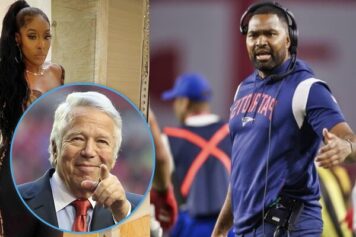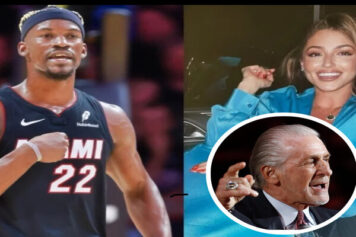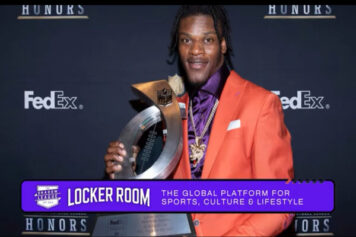Count me among that group whose eyes rolled heavenward at the sight of the blindingly coiffed Braxton family can-can line when their WE tv reality show premiered in 2011. But even through the slits of my tightly closed eyes, I could see that the Braxton family and their values were just too perfect an entry into the reality television marketplace. The WE executives know it well, chuckling all the way to the bank as season two of the Braxton spin-off show Tamar & Vince, featuring sister Tamar Braxton and her music executive husband Vincent Herbert, begins with an all-out ratings smash, complete with multimedia fan engagement.
Upon marginally closer inspection, my initial thoughts of both the Braxtons as a whole and Tamar as a microcosm were predictably disapproving: I was somewhat horrified by the stench of materialism, the waxy shine of facial plasticity, the oceans of weave cascading in waves of auburn, brown and gold down the sisters’ backs. But I consider it judicious, when entering the rocky ground of attempting to analyze a phenomenon of black reality TV, to face facts and determine whether the project is about clearing the air or airing the dirty laundry.
In the scheme of things, where does someone like Tamar Braxton rank along our climb to the mountaintop? Event, or non-event? Is there some dusty brick, tucked in a forgotten corner of the metaphorical edifice that is the institution of American racism that might be knocked loose if we can shake a bit of meaning from this moment in pop kulchur-making?
Three ideas provide a basis for sociologist Marci Bounds Littlefield’s examination of the role that media images play in constructing American ideas about and behaviors toward black women. First, the basic truth that, regardless of how far we think we’ve come (see Gabby Douglas), race still plays a major role in shaping black women’s daily experiences (see Gabby Douglas’ hair). Second, that the media has always been a powerful driving factor in the production and perpetuation of damaging stereotypes of black women And third, that current media saturation has increased the facility with which ideas are disseminated globally.
And to the extent that self-image is reinforced by images in the media, Tamar Braxton joins the deeply skewed collection available to American black women for reflection or rejection.
With Scandal’s Olivia Pope as the only current black female lead in fictional television, black women are left with Oprah (whose relatability has long been claimed by middle class white women) and the black women of reality TV. The reality stars are either stereotypically disadvantaged or stereotypically privileged, with the understanding that both stereotypes highlight the contemptuous aspects of their class distinction at the expense of the redeeming. On one hand we have the black women of The Bad Girls Club, whom we expect to draw blood. On the other we have the black women of Married to Medicine, whom we do not, and are sadly disappointed. The Braxtons may fall somewhere in the middle, where Toni’s fame and the family’s wealth positions them among the privileged, while a not-so-faint ghetto-fabulous aroma permeates the air and hangs like a storm cloud over tense moments. And Tamar, the breakout star with a successful spin-off, happens to be quite skilled at providing just the kinds of moments that make people tune in, week after week.
**********
The process of falling in like with Tamar Braxton begins with her mouth. The pattern seems to go like this: her lips part and out comes what sounds, at first, like a whole bunch of nonsense…but then you think about it, and it’s kind of cute. You try saying it, and you like it. And then, when you refresh your Twitter feed on Thursday night while the show is on, you see, in all its commonly misspelled glory, the Tamartian Twitterverse in a call-and-response with your own mind. The longer you watch (and with two reality shows, a talk show and a new album to promote, there is plenty to watch), the more sure you become that Tamar Braxton cannot possibly care what you or anyone else thinks. And that might just make you want to be her.
For some women, Tamar Braxton is a role model, a higher self to which a wildest dream might aspire. Some want her stuff, some want her spunk, some want her relationship, some dream of having their own baby with little Louis Vuitton onesies twinkling in their eyes. These women don’t want her husband Vince, per se, because that would desecrate the bestie-ness of their relationship with Tamar; but they do want a man like him, who will love them and take care of them and make faces when they act a fool.
Some want her strength, as they witnessed and perhaps relate to Tamar and Vince’s struggle to become parents. Her openness about her journey through infertility are like a welcome ideologically disruptive time bomb set to explode in what passes for a brain in Rush Limbaugh’s head. In spite of what may or may not be stereotypically ghetto about the show and about Tamar herself, her example interrupts the interrelated narratives that relate to the criminalization of black single motherhood, the stereotypes of many black women as “welfare queens” and “bad girls” that can’t seem to wrap their minds around birth control in the 21st century.
But it’s not that simple either. Tamar Braxton is happily married, but she knows that much of her audience is not (being a happily married black woman these days can be quite the coup). Describing Vince’s transition into fatherhood, Braxton is quoted in this month’s Ebony cover story, gushing that her hubby is the best. “If he wasn’t my husband,” she said, “he would still be the best baby daddy possible.” You either know what that means or you don’t. And if you do, I bet you appreciate it.
Reading the bittersweet tweets of fans for whom Tamar and Vince’s relationship provides an example of something to strive for, I found myself wondering how many of the people posting grew up in a house with both of their parents, or were able to witness a loving black relationship during their formative years.
I'm trying to get on my #TamarandVince ; my #BeyonceandJayz SHIT! I feel so behind.. but so motivated– PUSH! haha
— Amberly (@KingovsorrO) September 20, 2013
All of this leads me to gingerly approach the loaded word, made even more loaded by putting the words black and female in front of it: icon. Is Tamar Braxton an icon? Probably not, maybe never, certainly not yet. But if there is something iconic about her, I don’t want to miss it because of the bias of my own experience. The idea of her as an icon, particularly as it comes directly out of my initial pooh face, appeals to me. I have to be able to see what’s not me to see me. And I can’t see it if I’m talking shit about it. The issues she calls attention to gain visibility because of the way she espouses them, not just because of what she says about them.
And that’s what makes it a worthy exercise to consider her. Not necessarily to follow, not necessarily to emulate. Independent researcher Tracy R. Carpenter, in her article “Construction of the Crack Mother Icon,” describes the term icon as one that “accommodates multifaceted representations of African American women in literary and cinematic depictions and political and media portrayal.” Given that perspective, I think we have enough room for Tamar and her sisters, Oprah, Olivia Pope and the brawling doctors’ wives. We need to continue to interrogate their examples and complicate them, to admit and embrace the ghetto and the fabulous, and what about us is neither ghetto nor fabulous. Be all that we are until all that we are is no longer something that anyone can define externally.
What people love about Tamar Braxton is how she is unquestionably herself, no matter what anyone says or thinks, or how it fits into their narrative of who she ought to be. I think that’s an example we can all learn from.



